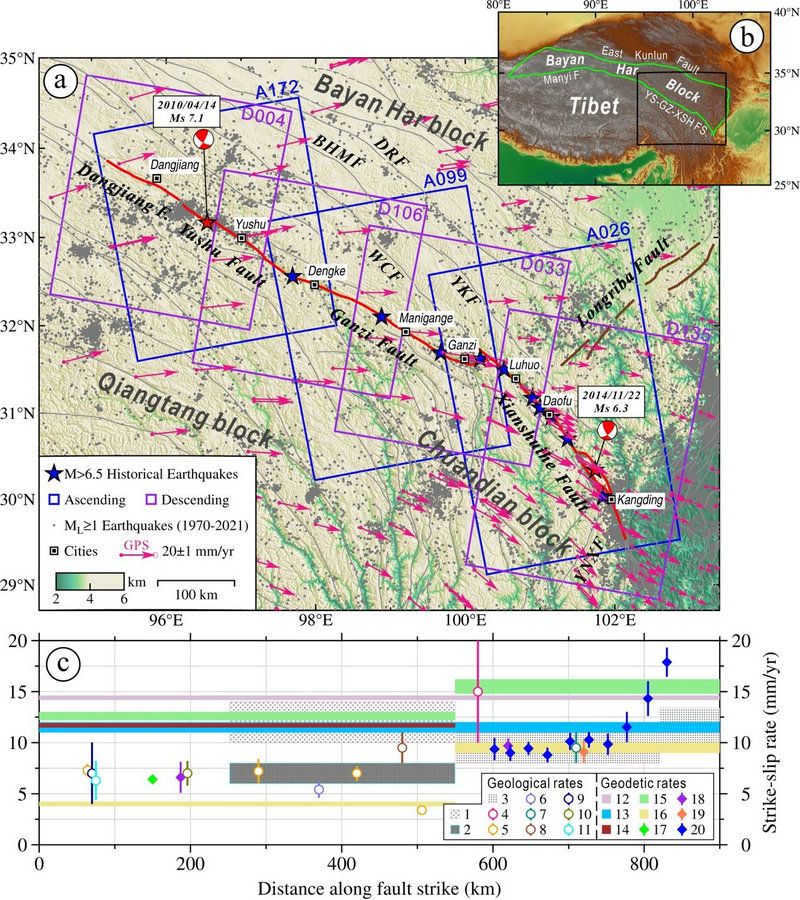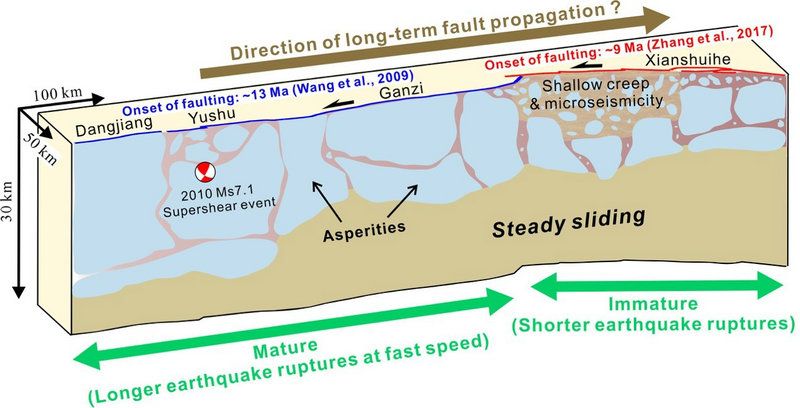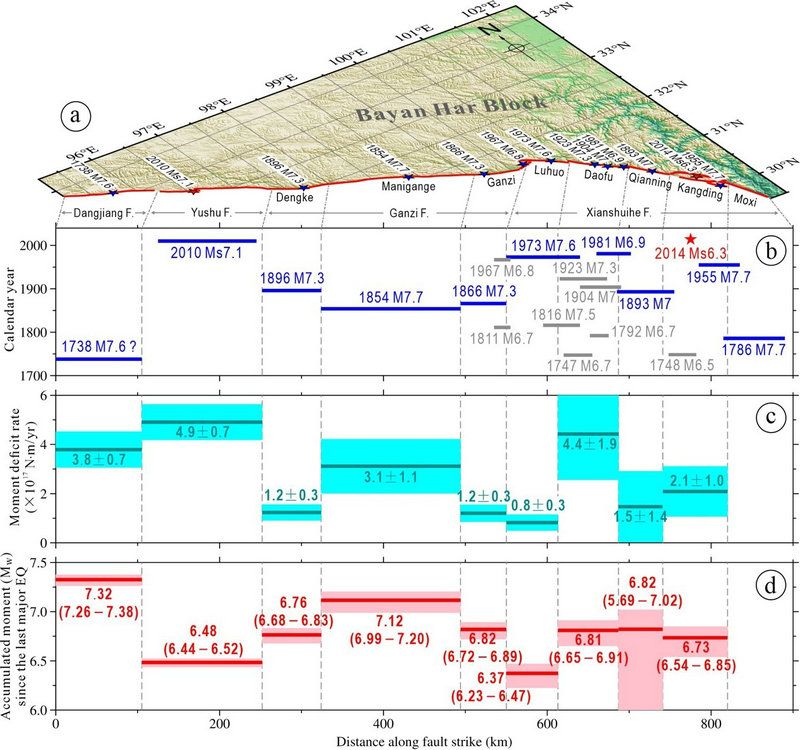The 900-km-long Yushu-Ganzi-Xianshuihe fault system in eastern Tibet is one of the world's most seismically active fault systems. It has hosted 12 M > 7 earthquakes since the 18th century, and its future seismic risk has been the subject of extensive research over the past two decades. Besides, the Yushu-Ganzi-Xianshuihe fault system serves as a boundary that separates the Bayan Har and Qiangtang/Chuandian blocks (Fig. 1); its kinematics provides vital information for understanding the tectonics of the central eastern plateau. Many researchers have carried out detailed investigations into historical earthquake ruptures and fault slip rates, but geological studies that are based on a few field sites are insufficient for quantifying strain accumulation and seismic potential along its entire 900-km length. Previous studies have hinted that the western segment (i.e. the Yushu-Ganzi fault) of the fault system differs largely from its eastern segment (i.e. the Xianshuihe fault) in strain accumulation and release. Yet, its origin remains unknown.
In a study led by Prof. Peizhen Zhang, Prof. Yu Zhou and PhD student Xin Qiao from the School of Earth Sciences and Engineering at Sun Yat-sen University, they use high-resolution Sentinel-1 InSAR velocities to map the present-day deformation along the fault system, aiming to explore the above-mentioned questions.
They first derive a complete deformation map (Fig. 2), based on which they solve for fault kinematic parameters including slip rate, locking depth and dip angle using a Bayesian Markov Chain Monte Carlo inversion approach. Slip rate on the Dangjiang-Yushu-Ganzi fault is consistently 5–6 mm/yr, only half of that on the Xianshuihe fault (Fig. 3). This rate difference originates from nonuniform deformation mechanism within the Bayan Har block (Fig. 3), with the western part of the block deforming more rigidly than the eastern part. Both historical and modern earthquake catalogues show that the western fault segment has only recorded M > 7 earthquakes whereas the eastern segment has seen many small-to-moderate ruptures in addition to large earthquakes. These observations imply that the western fault segment may be more structurally mature than the eastern segment (Fig. 4): the more mature Yushu-Ganzi fault tends to generate large earthquakes with greater coseismic slips at faster speeds such as the 2010 Yushu earthquake, whereas the Xianshuihe fault tends to generate more frequent and smaller-magnitude earthquakes due to discrete asperities with larger gaps and higher strength of barriers between them, such as the 2014 Kangding and 2022 Luding earthquakes.
They also calculate the seismic moment deficits along the fault system (Fig. 5) and find that several segments, e.g. the Dangjiang fault and the Manigange segment of the Ganzi fault, have accumulated a large seismic moment (equates to an Mw > 7 earthquake) since the last major event. In addition, because the eastern part of the fault system is relatively more immature, which means that it is easier to break in smaller-magnitude (Mw < 7) earthquakes, special attention is needed for seismic monitoring.

Fig. 1. Tectonic map of the eastern Tibetan Plateau.

Fig. 2. Sentinel-1 InSAR velocities for the Yushu-Ganzi-Xianshuihe fault system (positive values for motion towards the satellite).

Fig. 3. Conceptual 2D kinematic model for eastern Tibet.

Fig. 4. Conceptual 3D structural model along the Yushu-Ganzi-Xianshuihe fault system.

Fig. 5. Historical earthquakes along the fault system and accumulated seismic moment since the last major earthquake.
This study has been recently published in Earth and Planetary Science Letters by Xin Qiao, Yu Zhou, Peizhen Zhang, entitled “Along-strike variation in fault structural maturity and seismic moment deficits on the Yushu-Ganzi-Xianshuihe fault system revealed by strain accumulation and regional seismicity”.
This work was supported by the Second Tibetan Plateau Scientific Expedition and Research Program (STEP) (2019QZKK0901), National Natural Science Foundation of China (41874020), Guangdong Province Introduced Innovative R&D Team of Geological Processes and Natural Disasters around the South China Sea (2016ZT06N331) and Deep Earth Exploration and Resource Environment (2017ZT07Z066).
Link to the paper: https://doi.org/10.1016/j.epsl.2022.117799
